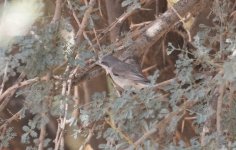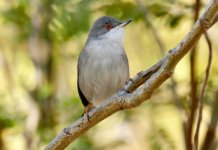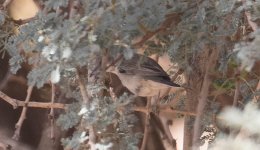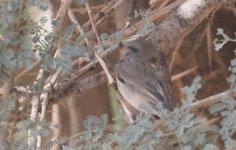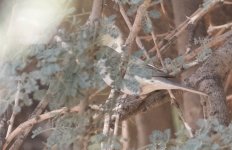This was my first impression (one of that 'group'), but I hesitate to comment on a single photo as this one. In any case, bearing in mind the limitations of such an exercise, here it goes:
We can rule out Orphean safely on proportions and bill size (proportions, really) alone, imo. Orphean are bulky birds with proportionately large bill, and the eye would most likely show some pale coloration even in such a pic even if it were a 2nd year bird); the white half eye-ring would be atypical for Orphean as well (while typical of Lesser Whitethroat); the front seems pale, another pro LW feature and atypical of Orphean (even if this were a 2nd year bird, the front would be dark already). Sardinian ruled out as well.
Subalpine (species group) can also be ruled out based on the facial pattern (very dark ear coverts, white eye-ring restricted to lower half only, as said above), lack of any red visible around or in the eye; tail not properly visible (partially hidden by the Acacia leaves), but it seems to be short (I think the tip, i.e. where it ends is visible, but not 100% sure on this).
Lesser Whitethroat seems to me the best fitting species, regardless of rarity. There have been a few weeks of Levant wind, making this record more likely.




